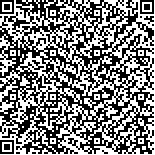本文已被:浏览 2169次 下载 4633次
投稿时间:2013-12-25 修订日期:2014-10-17
投稿时间:2013-12-25 修订日期:2014-10-17
中文摘要: 为了探究8 mm云雷达探测到的大气云粒子相态特征,根据Shupe总结得到云雷达探测参量:反射率因子、Doppler径向速度、线性退偏振比以及温度在不同相态水凝物对应的云雷达产品特征阈值,采用不对称T型的隶属函数,成员函数包括:反射率因子、线性退偏振比、径向速度以及垂直温度廓线,反演出的粒子相态包括:雪、冰晶、混合相态、液水、毛毛雨、雨等6种。通过联合分析中国气象科学研究院灾害天气国家重点实验室的偏振云雷达探测资料和GTS1型探空仪温度数据,结果表明:通过模糊逻辑法对云雷达探测的参量反演出的大气粒子相态结果与探空实时数据一致性较好,对现阶段常规天气预报参考、人工影响天气作业指挥以及效果评估来说具有较好指导性。
中文关键词: 云雷达, 温度, 模糊逻辑, 云相态
Abstract:To investigate the phase features of atmospheric particles detected by the Ka band cloud radar of State Key Laboratory of Severe Weather, Chinese Academy of Meteorological Sciences, on the basis of Shupe’s summary about the characteristic values of different cloud particle phases, including reflectivity, Doppler radial velocity and linear depolarization ratio of cloud radar and temperature of rawinsonde. By using the asymmetric T type functions, which are reflectivity, Doppler radial velocity, linear depolarization ratio and verticle temperature profile, six different phases of cloud particles are retrieved, i.e., snow, ice crystal, mixed phase, liquid, drizzle and rain. By means of joint analysis between cloud radar data and sounding data at the same time and places, the following conclusion is drawn: the particle phases retrived by fuzzy logic method shows good consistency with real time sounding data, and may play a directive role in weather forecasting, weather modification and effect evalution.
文章编号: 中图分类号: 文献标志码:
基金项目:国家重点基础研究发展计划(973计划)(2012CB417202)和公益性行业(气象)科研专项(GYHY201406001)共同资助
引用文本:
王德旺,刘黎平,宗蓉,黄宁立,谢潇,欧建军,郭巍,勾亚斌,2015.基于模糊逻辑的大气云粒子相态反演和效果分析[J].气象,41(2):171-181.
WANG Dewang,LIU Liping,ZONG Rong,HUANG Ningli,XIE Xiao,OU Jianjun,GUO Wei,GOU Yabin,2015.Fuzzy Logic Method in Retrieval Atmospheric Cloud Particle Phases and Effect Analysis[J].Meteor Mon,41(2):171-181.
王德旺,刘黎平,宗蓉,黄宁立,谢潇,欧建军,郭巍,勾亚斌,2015.基于模糊逻辑的大气云粒子相态反演和效果分析[J].气象,41(2):171-181.
WANG Dewang,LIU Liping,ZONG Rong,HUANG Ningli,XIE Xiao,OU Jianjun,GUO Wei,GOU Yabin,2015.Fuzzy Logic Method in Retrieval Atmospheric Cloud Particle Phases and Effect Analysis[J].Meteor Mon,41(2):171-181.

